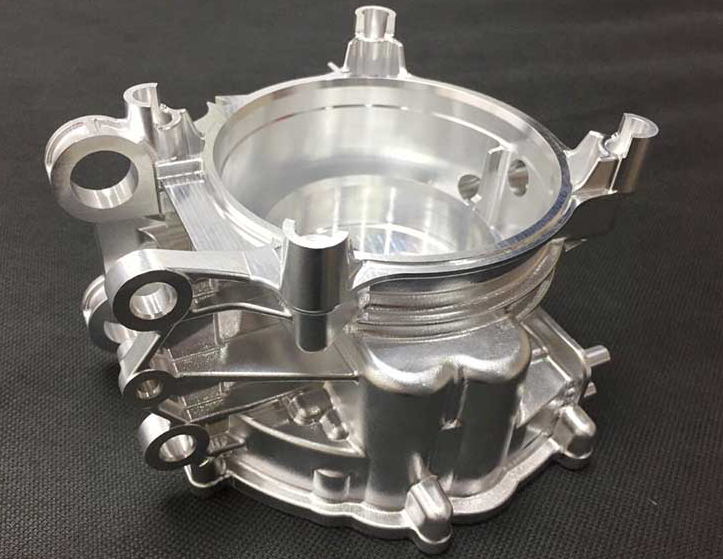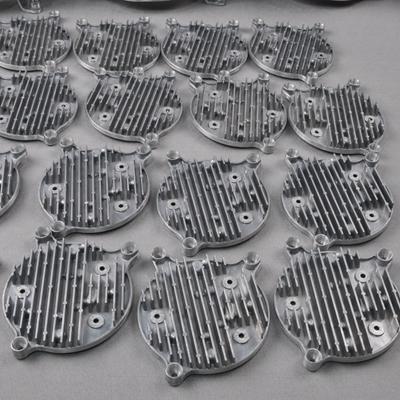The Best Strategy To Use For Stahl Specialty Company
The Best Strategy To Use For Stahl Specialty Company
Blog Article
Fascination About Stahl Specialty Company
Table of Contents5 Easy Facts About Stahl Specialty Company DescribedHow Stahl Specialty Company can Save You Time, Stress, and Money.The Only Guide to Stahl Specialty CompanyExcitement About Stahl Specialty CompanyFascination About Stahl Specialty CompanyWhat Does Stahl Specialty Company Do?

If you're designing a metal item, you have actually likely taken into consideration using aluminum as the base material. It has a high strength-to-weight proportion, good rust resistance, good formability, and visual allure. These variables have actually caused its raised appeal over the last few years. Pure light weight aluminum has restricted applications, so it is typically incorporated with other elements, such as silicon, magnesium, and manganese to form alloys.
Various elements and quantities generate a wide range of desirable physical and chemical residential or commercial properties. And the Light weight aluminum Organization (AA), based in North America, has developed specifications that control aluminum alloys' structure, buildings, and language. There are two types of light weight aluminum alloys wrought and cast. Shop employees form these alloy types in various means, which substantially affects their attributes.
Indicators on Stahl Specialty Company You Should Know
Cast aluminum alloys are made by melting pure aluminum and integrating it with various other steels while in fluid type. The mix is put into a sand, die, or financial investment mold and mildew. After solidification, the steel is gotten rid of from its mold and mildew. At this stage, it is in either its last form or as a billet or ingot for further processing.

160.0 stands for a cast with a minimum of 99.60% light weight aluminum. The 4th figure, which follows the decimal factor, defines if the alloy is a spreading (xxx. 0) or an ingot (xxx. 1). Wrought light weight aluminum alloys likewise begin by combining molten light weight aluminum with other metals. In contrast to cast alloys, nonetheless, they are created into their last form with procedures such as extrusion, rolling, and flexing after the metal has actually solidified into billets or ingots.
There are many small differences in between wrought and cast aluminum alloys, such as that cast alloys can consist of more substantial quantities of other steels than wrought alloys. However the most significant difference between these alloys is the fabrication process with which they will go to supply the end product. Aside from some surface area treatments, cast alloys will certainly exit their mold and mildew in practically the specific strong type wanted, whereas functioned alloys will certainly undergo several modifications while in their strong state.
If you think that a wrought alloy might be the very best for your task, take an appearance at some of our articles that describe more regarding details wrought alloys, such as Alloy 6061 and Alloy 6063. On the other hand, if you assume a cast alloy would be better for you, you can discover more about some cast alloys in our Alloy 380 and Alloy 383 short articles (coming soon).
The Definitive Guide for Stahl Specialty Company
When choosing an aluminum shop for your production demands, it's crucial to examine several variables. One of one of the most essential facets to consider is the experience and proficiency of the shop. Aluminum Casting. Choosing a shop who has the ideal understanding of the aluminum casting process, and the portfolio to show for it, helps to have a successful end result for your project
Having the experience and market expertise to craft your spreadings for optimum manufacturing and top quality outcomes will enhance the task. Making aluminum castings requires a facility set of procedures to accomplish the ideal outcomes. When choosing a brand-new light weight aluminum factory to companion with, ensure they have substantial sector experience and are experienced regarding all elements of the aluminum casting process: design, production, product evaluation, and product screening.
The shop must likewise have a proven track record of providing exceptional items that fulfill or surpass customer assumptions. Quality assurance needs to additionally be at the top of your list when picking a light weight aluminum factory. By dealing with a certified shop who adheres to the standards for high quality control, you can protect the stability of your product and ensure it meets your requirements.
By choosing a firm who offers solutions that satisfy or surpass your product needs, you can be sure that your task will be finished with the utmost accuracy and efficiency. Various parts call for different production strategies to cast aluminum, such as sand casting or pass away casting.
The Single Strategy To Use For Stahl Specialty Company
Die casting is the name provided to the process of producing complicated steel parts through use of molds of the component, likewise referred to as passes away. The procedure makes use of non-ferrous steels which do not have iron, such as aluminum, zinc and magnesium, due to the desirable homes of the steels such as reduced weight, greater conductivity, non-magnetic conductivity and resistance to corrosion.
Die casting production is quickly, making high manufacturing degrees of components easy. It produces even more components than any various other procedure, with a high degree of precision and repeatability. To get more information regarding die casting and die spreading products made use of at the same time, kept reading. There are three sub-processes that drop under the group of die spreading: gravity die casting (or permanent mold and mildew casting), low-pressure die casting and high-pressure die casting.
No matter of the sub-process, the die spreading procedure can be damaged down into six actions. After the pureness of the alloy is tested, passes away are developed. To prepare the needs casting, it is vital that the dies are tidy, to ensure that no residue from previous manufacturings remain. After cleaning, the ejection lubrication is put on the die to ensure a smooth release.
How Stahl Specialty Company can Save You Time, Stress, and Money.
The pure steel, also recognized as ingot, is added to the furnace and kept at the molten temperature of the steel, which is after that moved to the shot chamber and infused into the die. The pressure is then maintained as the steel strengthens. Once the steel strengthens, click resources the cooling procedure begins.
(https://issuu.com/stahlspecialc)
The thicker the wall surface of the part, the longer the cooling time due to the amount of indoor steel that additionally needs to cool. After the element is totally cooled, the die halves open and an ejection mechanism presses the part out. Following the ejection, the die is closed for the following shot cycle.
The flash is the extra material that is cast during the process. Deburring eliminates the smaller pieces, called burrs, after the cutting procedure.
How Stahl Specialty Company can Save You Time, Stress, and Money.

Zinc is one of the most pre-owned alloys for die casting due to its reduced price of raw products. Its deterioration resistance also allows the elements to be lengthy long-term, and it is one of the extra castable alloys due to its reduced melting factor.
As pointed out, this alloy is one of the most frequently utilized, yet produces will, sometimes, choose aluminum over zinc because of light weight aluminum's production advantages. Aluminum is extremely affordable and among the a lot more flexible alloys. Aluminum is utilized for a variety of various products and markets anything from window frames to aerospace materials.
Report this page